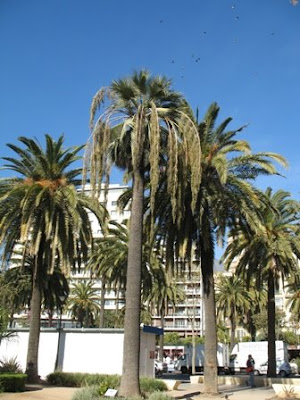 The Sweet Chestnut is the tree that edible Chestnuts come from. The species name is "Castanea Sativa" and it is a tree that is native to Southern Europe. This tree should not be confused with the Common Horse Chestnut which has a similar shaped "fruit" that is NOT edible. The images in this blog post were taken at a very large Sweet Chestnut tree in Southern Spain that is called the "Castaño Santo de Istan". In the fourth image down in this post there is a picture of my son in the tree that gives an idea of its size.
The Sweet Chestnut is the tree that edible Chestnuts come from. The species name is "Castanea Sativa" and it is a tree that is native to Southern Europe. This tree should not be confused with the Common Horse Chestnut which has a similar shaped "fruit" that is NOT edible. The images in this blog post were taken at a very large Sweet Chestnut tree in Southern Spain that is called the "Castaño Santo de Istan". In the fourth image down in this post there is a picture of my son in the tree that gives an idea of its size. The leaves of the Sweet Chestnut are elliptical with serrate margins and pinnate venation. They measure about 5-7 inches long and about 2-3 inches wide. The edible part of the chestnut is enclosed in a "porky pine like" casing that splits open when mature revealing the nut inside.
The leaves of the Sweet Chestnut are elliptical with serrate margins and pinnate venation. They measure about 5-7 inches long and about 2-3 inches wide. The edible part of the chestnut is enclosed in a "porky pine like" casing that splits open when mature revealing the nut inside.
The tree above is the largest Sweet Chestnut that I have seen. It´s trunk is 46 feet in circumference at the base. It is estimated to be between 800 and 1,000 years old.
 The bark of the Castinea sative can be quite different depending on the maturity of the branch or trunk. The image above contrasts the very young bark and very mature bark.
The bark of the Castinea sative can be quite different depending on the maturity of the branch or trunk. The image above contrasts the very young bark and very mature bark.Every winter in Spain, usually around Christmas, it is common to come across street vendors, like the one below, that roast fresh Chestnuts and sell them. The Chestnuts are roasted barbecue style in a drum over hot coals. The sweet, nutty smell of the roasting Chestnuts fills the cool air and is almost irresistible to the passerby.


















































